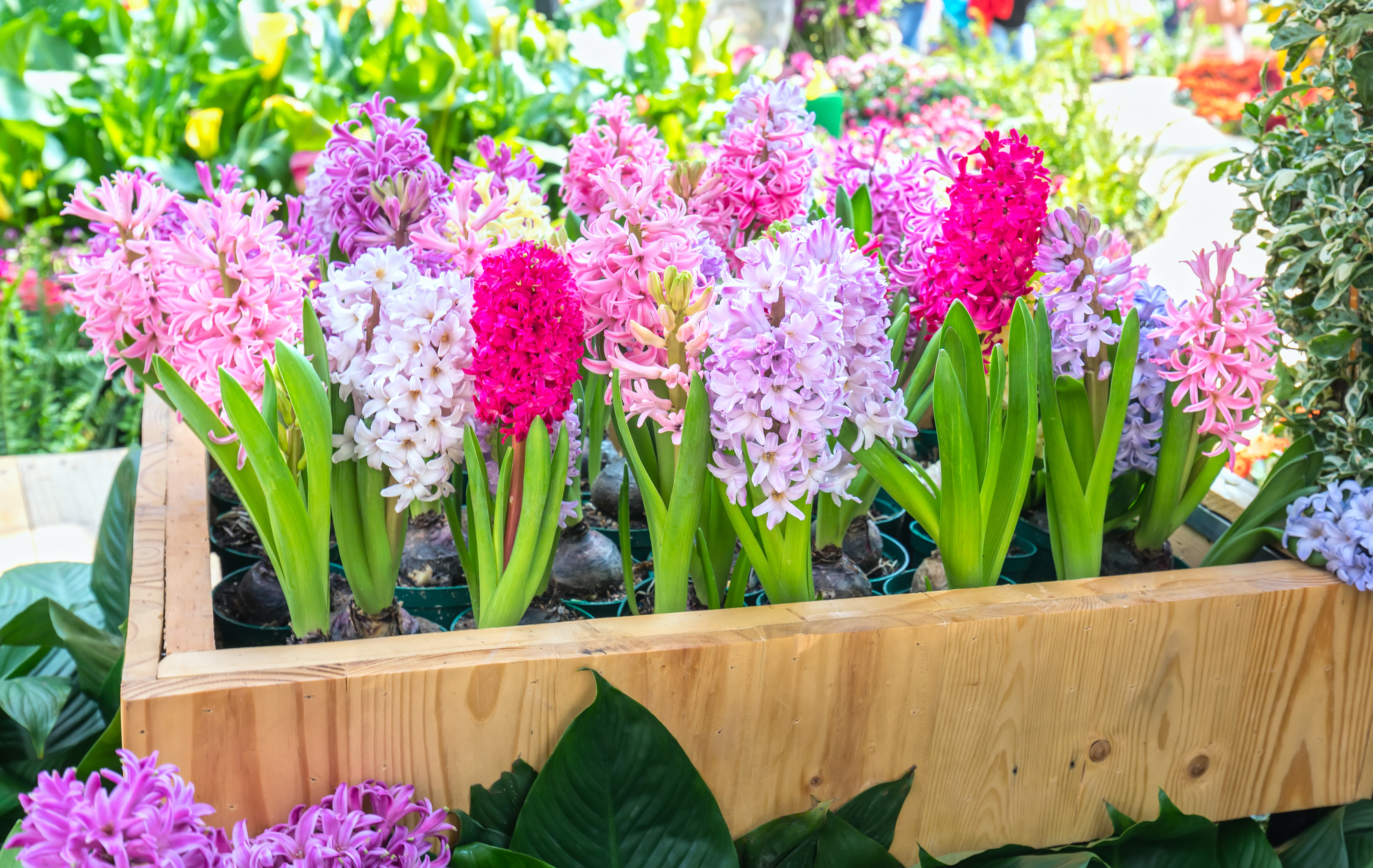
Hyacinth flower meaning and symbolism have deep roots in Greek mythology. It comes in a range of colors, each symbolizing something unique. What is the meaning behind the hyacinth flower?
The meaning of the hyacinth flower is peace, commitment, devotion, and jealousy. The flower symbolizes the Greek God Apollo, who legend says gave the flower its name. This beautiful and vibrant flower got famous during the Victorian age when Victorians gave different flower colors their meaning.
In the rest of this article, we’ll go through the hyacinth flower’s meaning and symbolism in greater detail. I will also give you a brief history of the origins of the hyacinth flower in Greek mythology and Victorian times.
Meaning of Different Colors of Hyacinth Flowers
Given the rich historical significance, the different colors of hyacinths have different meanings in modern-day occasions. They are available in a range of colors, such as white, blue, pink, yellow, red, orange, and purple and each color has a symbolic meaning:
- White hyacinths. White hyacinths are used at weddings as they symbolize peace, innocence, and purity. They also hold a spiritual meaning and thus are a popular choice to be used in churches.
- Pink hyacinths. Pink hyacinths represent new beginnings and joy. These are an excellent choice for a gift to a new mommy.
- Red hyacinths. Red hyacinths represent playfulness and passion. Red hyacinths aren’t popularly used to express love. But these can be used in a bouquet with other flowers to convey the message of love.
- Yellow hyacinths. Yellow hyacinths aren’t a favorite to many as they symbolize envy and feelings of jealousy. They are also popular garden plants, given their ornamental value.
- Blue hyacinths. Blue hyacinths are a symbol of commitment and sincerity. You can gift these to a friend or a lover to remind them of your loyalty.
- Purple hyacinths. A purple hyacinth is rich in meanings assigned to it. It represents many things at once, such as elegance, devotion, guilt, or regret. The use of this flower should be well-thought and considerate of others.
The Origin of Hyacinth Flower and Greek Mythology
The symbol of the hyacinth flower also has its roots in Greek Mythology. Derived from the legend of a young man named Hyacinthus, the flower has come to symbolize jealousy, sorrow, and devotion.
The Greek God of the sun, Apollo, had a companion named Hyacinthus, a Spartan youth. Apollo loved Hyacinthus, and both shared a love for athletics.
Legend has it that Apollo made a fatal throw while playing discus with Hyacinthus, resulting in his lover’s death. Devastated by the incident, Apollo was mourning the young man’s death when he saw a flower blooming from where the blood of youth spilled. He named it Hyacinth in memory of his lover.
In another version, Zephyrus, the west wind’s God, also loved Hyacinthus. He got jealous to see Apollo and Hyacinthus getting closer to each other, so he sent the wind that caused the discus to hit the young boy. The hyacinth derives its meaning of jealousy from this version of the Greek myth.
Brief History of Hyacinth Flower and Its Meaning
Hyacinth came to Europe in the late 1500s from countries of the Mediterranean region, such as Turkey and Syria. It wasn’t a common flower back then.
During the 16th and 17th centuries, the hyacinth was considered a flower of the elite. It wasn’t until the Victorian age that people started using this flower on different occasions.
The Victorians were passionate about equating ordinary things and events with dynamic and symbolic meanings. They created flower symbolism to communicate secret messages to others. Hyacinths became a part of this tradition.
Here are some Victorian examples of flower symbolism using different colored hyacinths:
- White hyacinth: White hyacinths were used in funeral arrangements. It was a popular option to present a widow with since the flower signified sadness and grief.
- Yellow hyacinth: Victorians conveyed their feelings of envy with yellow hyacinths.
- Purple hyacinth: The Victorians sincerely appreciated the regal beauty of the purple hyacinth flower. They saw it as a representation of both respect and forgiveness.
Final Thoughts
Hyacinth is an eye-catching flower that comes in many colors, but the general meaning behind the hyacinth flower is peace, commitment, devotion, and jealousy. It is a symbolic flower of the Greek Sun God Apollo, who named it in the loving memory of Hyacinthus.
People of the Victorian age thoroughly enjoyed the beauty of this flower and gave it different meanings. Today various colors of Hyacinth are used on specific events and occasions according to their importance.
Other Articles You May Also Be Interested In
Hydrangea Flower Meaning & Symbolism
Rhododendron Flower Meaning & Symbolism
Snapdragon Flower Meaning, Symbolism & Cultural Significance

